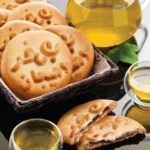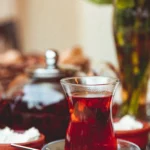Best‑Selling Tea in Iran: Top Iranian Tea Brands & Why Refah Tea Lahijan Leads (2025)

Best‑Selling Tea in Iran: Top Iranian Tea Brands & Why Refah Tea Lahijan Leads (2025)
Tea is one of the most beloved drinks in Iran and an essential part of daily life. Iran is among the world’s major tea consumers, and every year large volumes of high‑quality domestic and imported tea are sold. But what is the best‑selling tea in Iran? In this guide, we review the top Iranian tea brands—with a spotlight on Refah Tea Lahijan as one of the best‑selling and most trusted choices in both the local market and exports.
What you’ll find in this guide
- A brief history of tea in Iran
- Criteria for choosing the best and best‑selling tea
- Best‑selling tea brands in Iran
- Refah Tea Lahijan: features, quality, and exports
- Iranian vs. foreign tea: side‑by‑side comparison
- How to identify quality tea
- Health benefits of black tea
- Final verdict + where to buy
A brief history of tea in Iran
Tea cultivation in Iran goes back more than a century. Mohammad Mirza Kashf‑al‑Saltaneh, known as the father of Iranian tea, began tea cultivation in Lahijan in 1902 (1281 SH). Today, the provinces of Gilan and Mazandaran are the main tea‑growing regions.
Fun fact: The humid climate and fertile soils along the Caspian coast create ideal conditions for fragrant, full‑bodied teas.
How to choose the best (and best‑selling) tea in Iran
Selecting great tea means paying attention to a few fundamentals that influence aroma, flavor, and overall quality.
1) Color & aroma: first signs of quality
- Dry leaves: uniform in color, free from stems or yellow leaves.
- Brewed color: should be golden, amber, or light brown; overly dark or cloudy liquor may signal age or poor quality.
- Aroma: fresh and naturally intense; synthetic or perfumey notes suggest added essence.
2) Taste: what drinkers notice most
- Balanced, neither bland nor harshly bitter.
- Pronounced astringency or sourness can indicate improper processing or staleness.
- Leaves a pleasant aftertaste.
3) Clean ingredients
- No artificial colors.
- No synthetic essences; the fragrance should be intrinsic to the tea.
- No preservatives; fresh tea doesn’t need them.
4) Origin & terroir
- North Iran (Lahijan, Fuman, Amlash): humid climate and rich soils yield teas with stronger aroma and flavor.
- Altitude matters: higher‑elevation gardens often produce finer leaves.
- Mountain teas: day–night temperature swings intensify aromatic compounds.
5) Packaging that protects freshness
- Light‑ and moisture‑resistant materials.
- One‑way degassing valve for foil packs helps air escape.
- Clear production and best‑before dates; freshest lots (within ~6 months) generally taste best.
6) Brand trust & certifications
- Reputable brands (such as Refah Tea Lahijan) tend to follow consistent processing standards.
- Look for valid health and safety permits on the pack.
Best‑selling tea brands in Iran
Some of the most familiar—and strong‑selling—brands include:
- Refah Tea Lahijan
- Ahmad Tea
- Saharkhiz
- Noshineh
Among these, Refah Tea Lahijan stands out for its consistent quality and distinctive taste and is also exported to multiple countries.
Refah Tea Lahijan: best‑selling at home, trusted abroad
Refah Tea is one of Iran’s long‑established, reputable producers. Using carefully selected leaves from premium Lahijan gardens, the brand delivers a naturally fragrant, memorable cup.
Key features
- Grown in select Lahijan estates
- Modern, standard processing and careful sorting
- Natural aroma and lasting flavor
- No additives or artificial coloring
- Export presence in the following markets:
| Region | Key countries | Share of exports | Volume (tons) |
|---|---|---|---|
| Neighboring countries | Iraq, Afghanistan, Turkmenistan, Uzbekistan, Tajikistan | 38% | 95 |
| Persian Gulf | Oman, UAE, Kuwait | 32% | 80 |
| Europe & Asia | Russia, Germany, Turkey, Australia, Sweden, Egypt, Poland | 25% | 62.5 |
| USA | United States | 5% | 12.5 |
This broad footprint reflects growing appreciation for the clean, natural profile of Iranian Lahijan tea.
Iranian vs. foreign tea: quick comparison
| Criterion | Best‑selling in Iran (e.g., Refah Tea Lahijan) | Foreign brands (e.g., Lipton, Ahmad) |
| Flavor | Smooth and naturally aromatic | Sometimes strong or perfumey |
| Price | Good value | Often more expensive |
| Freshness | Fresh, no preservatives | Some include additives |
| Support for local growers | Yes | Not applicable |
How to identify quality tea (at home)
- Inspect the dry leaves: uniform size, free of stems and wood chips.
- Brew test: the liquor should run amber to light brown, clear and bright.
- Smell and taste: look for a natural, clean aroma and a balanced, lasting finish.
Health benefits of black tea (overview)
Research suggests black tea may help with:
- Stress reduction and relaxation
- Digestive support
- Immune function
- Lower cardiovascular risk markers
Note: enjoy tea as part of a varied diet; consult your physician for personal advice.
Final verdict: the best‑selling tea in Iran
If you’re seeking the best‑selling tea in Iran, Refah Tea Lahijan is a top choice. It’s widely loved domestically and recognized as an export‑ready Iranian brand.
Ready to buy? Visit the Refah Tea Lahijan online store to explore authentic Iranian teas at fair prices.
Helpful FAQs
Which Iranian city is most famous for tea?
Lahijan in Gilan province is Iran’s best‑known tea hub thanks to its climate and long history of cultivation.
What color should properly brewed Iranian black tea be?
A clear golden‑amber to light brown—not murky or inky black.
Does premium Iranian tea contain added essence?
No. Authentic high‑quality Iranian tea—like Refah Tea Lahijan—does not contain artificial essences or colors.
Is Iranian tea strong?
It’s typically fragrant and balanced rather than harshly bitter. You can adjust strength by leaf weight and brew time.
How can I store tea to keep it fresh?
Use airtight, light‑proof containers, away from heat and moisture; avoid storing near spices.


